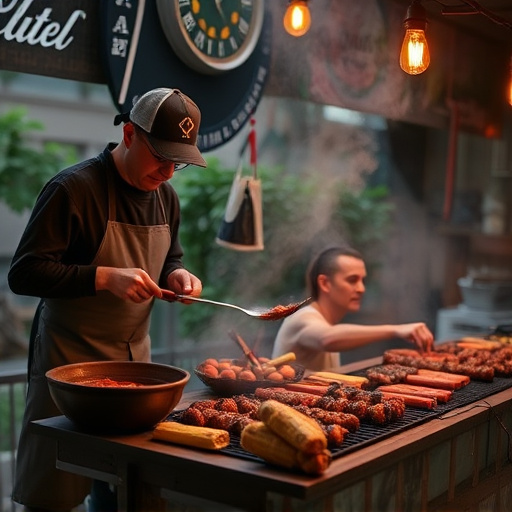Choosing the right cut of baby back ribs with good meat substance ensures a delicious BBQ spare ribs recipe. Seasoning with a blended rub of paprika, garlic powder, brown sugar, and chili powder clings to the ribs for a crispy crust. Slow cooking at low temperatures breaks down collagen, resulting in tender, smoky flavors. Grilling techniques and dry rubbing enhance flavor, while barbecue sauce seals juices. Maintain internal temperature around 195°F (90°C) for even cooking.
“Elevate your summer cookouts with classic BBQ spare ribs, a crowd-pleasing favorite. This guide unravels the secrets of achieving perfect, mouthwatering ribs. From selecting the ideal cut for maximum flavor to mastering seasoning techniques and slow cooking methods for tender meat, we’ve got you covered. Additionally, learn grilling tips to achieve a crispy, golden exterior. Discover the art of crafting an unforgettable BBQ spare ribs recipe that will have your family and friends begging for more.”
- Choosing the Perfect Cut for BBQ Ribs
- Seasoning: The Key to Flavorful Ribs
- Slow Cooking for Tender Results
- Grilling Techniques for a Crispy Finish
Choosing the Perfect Cut for BBQ Ribs
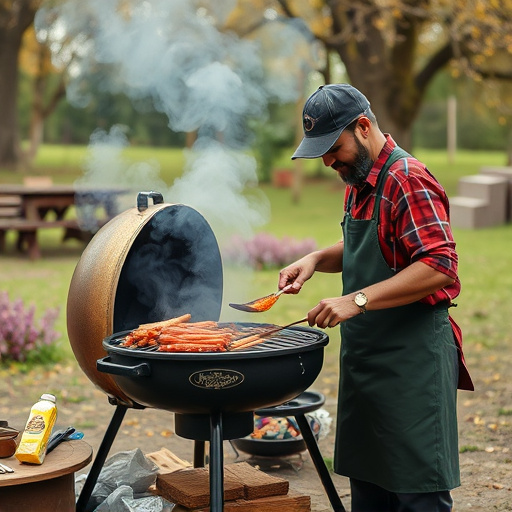
When it comes to BBQ spare ribs recipes, selecting the right cut is half the battle won. The most popular choice for a reason, the baby back rib, attaches to the spine at one end and has less fat marbling than other cuts, making it tender and flavorful when cooked low and slow. This cut’s versatility allows for a balanced blend of meat and bone, ensuring every bite is satisfying.
Opting for quality over quantity, consider seeking out ribs with good meaty substance between the bones, signifying optimal flavor potential. Remember, proper preparation trumps the cut itself, but having fresh, high-quality spare ribs as your foundation never hurts!
Seasoning: The Key to Flavorful Ribs
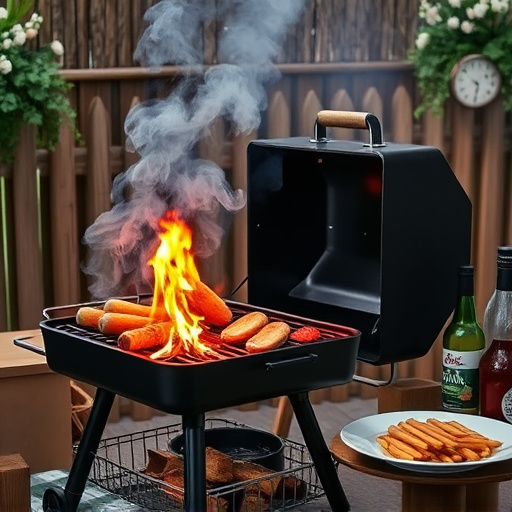
The secret to mouthwatering BBQ spare ribs lies in the seasoning. A well-crafted rub is the foundation for juicy, flavorful ribs that will have folks licking their bones at your summer cookout. Beyond salt and pepper, experiment with a blend of spices like paprika, garlic powder, brown sugar, and chili powder for a rich, complex taste.
A good rub clings to the ribs, creating a delicious crust as it caramelizes during slow cooking. For maximum impact, rub the seasoning generously into both sides of the spare ribs before wrapping them tightly in foil or cooking them low and slow over indirect heat until tender.
Slow Cooking for Tender Results
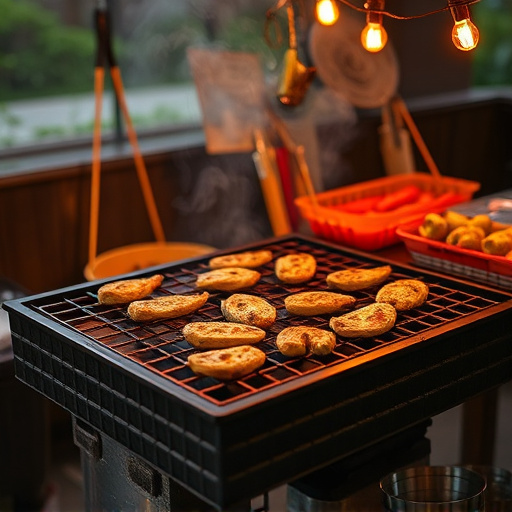
Slow cooking is a secret weapon for achieving tender, mouthwatering BBQ spare ribs. Unlike faster cooking methods that can leave ribs tough and chewy, slow and low cooking allows the collagen in the meat to break down gradually, transforming it into delicious, fall-off-the-bone tenderness. This method also helps infuse the ribs with rich, smoky flavors from the BBQ sauce, creating a harmonious blend of textures and tastes.
For the best results with your bbq spare ribs recipe, consider using a slow cooker or oven on low heat. The slower cooking time allows for the meat to absorb the juices and flavors, ensuring every bite is a pleasure. Whether you’re hosting a summer cookout or enjoying a lazy Sunday, slow-cooked BBQ spare ribs promise to be a crowd-pleaser, offering both flavor and texture that will keep your guests coming back for more.
Grilling Techniques for a Crispy Finish
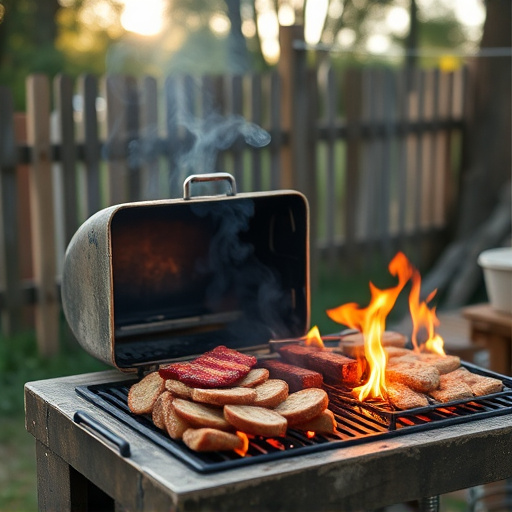
To achieve a crispy, golden finish for your classic BBQ spare ribs, grilling techniques are key. Preheating your grill to high temperatures ensures even heat distribution, allowing the meat to sear and caramelize, creating a delicious crust. A simple dry rub of salt, pepper, paprika, and brown sugar can be used before grilling to add flavor and moisture. For an extra crispy touch, try finishing the ribs with a brush of barbecue sauce just before they’re done cooking; this will not only enhance the taste but also help seal in the meat’s juices.
During grilling, it’s essential to flip the ribs regularly to ensure even cooking. The high heat will render the fat and tenderize the meat, making it fall-off-the-bone tender. Keep an eye on them, as they can quickly go from perfect to burnt. Using a meat thermometer is crucial; spare ribs are done when the internal temperature reaches approximately 195°F (90°C), ensuring they’re cooked through without overcooking and drying out.
